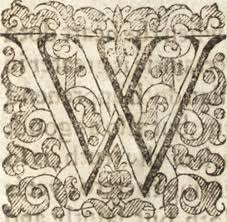 hilst Italian keyboard continuo techniques did not become widely familiar in England until after the Restoration (unlike Italian theorbo techniques, which were in use in the first decades of the century), there are a number of sources from as early as the 1620s that consist of an unfigured bass from which the organ was to play. Coprario’s Fantasia Suites in GB-Och Mus. MS67 are such an example, and whilst it may be thought that they might represent the unfinished work of the scribe, the various annotations added to the music suggests that they were indeed used in practice: the hand suggests that Thomas Tomkins was the organist in question.
hilst Italian keyboard continuo techniques did not become widely familiar in England until after the Restoration (unlike Italian theorbo techniques, which were in use in the first decades of the century), there are a number of sources from as early as the 1620s that consist of an unfigured bass from which the organ was to play. Coprario’s Fantasia Suites in GB-Och Mus. MS67 are such an example, and whilst it may be thought that they might represent the unfinished work of the scribe, the various annotations added to the music suggests that they were indeed used in practice: the hand suggests that Thomas Tomkins was the organist in question.
Such sources were known in England as ‘thorough-‘ or ‘through-basses’. There is practically no instruction from English sources on through-bass realisation until Locke’s brief Rules in Melothesia (1673). One probable reason for this is that, unlike the lute (which was widely adopted by amateurs and well-served by treatises), the organ was so often the preserve of professional players who instructed each other from master to pupil. There was no real demand from amateurs for such instruction, and this is borne out by the lack of through-bass sources from amateur contexts, and also by Roger North’s advice to amateurs that, due to the degree of ‘Ingenuity, Observation and Study’ required to master the technique, it was best to leave the whole business to the professionals. It was not until Italian continuo techniques were more widely practised in the final decades of the century that amateurs tried their hand at the art.
Realising an unfigured bass is relatively straightforward all the while conventional harmonic progressions are employed – but conventional harmony was something that English string consort music often eschewed, and besides, the more usual approach to the organ in string ensembles involved the provision of a polyphonic, not chordal, texture. In this sense, it is better to look for inspiration in the improvised realisation of basses represented by the contemporary Italian practice of partimento than from the later ‘continuo’ techniques that early keyboard players study as part of their training. Harmonic elasticity combined with an unfigured bass requires some prior familiarity with the music on the part of the organist and mistakes are less easy to conceal on the sustained tones of the organ than on the quickly-dying sound of the harpsichord. Add to this the need to improvise a polyphonic texture under such circumstances and the endeavour becomes more demanding, yet the sources show that professional organists undertook this as a matter of course.
It is significant that the majority of figured through-basses are associated with London or Oxford, demonstrating the fact that Italian influence was first felt in those centres. We may note that Purcell’s organ through-basses, especially those to the Sonnatas of III Parts, are very meticulously and densely figured. Many of the figurings produce interesting clashes with the string parts above, particularly in the resolution of suspensions and other dissonances, and it is often the case that modern players remove or adjust these. I suspect, however, that Purcell was well aware of the effect he was creating and that they ought to be allowed to stand as written.